
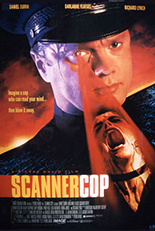 With Scanner Cop, we have one of the five greatest films about psychic powers due to an enlarged hypothalamus. Essentially an unnumbered Scanners IV, its title character is wimpy Sam Staziak (Daniel Quinn, Spiders II: Breeding Ground), a second-generation scanner who becomes a cop after 15 years living under the adoptive, scannerless wing of an LAPD commander (Richard Grove, Army of Darkness). In order to keep his scannerbilities under control, Sam must take meds daily; otherwise, he could suffer wild and ultimately fatal hallucinations like baby-doll faces bursting through his forehead.
With Scanner Cop, we have one of the five greatest films about psychic powers due to an enlarged hypothalamus. Essentially an unnumbered Scanners IV, its title character is wimpy Sam Staziak (Daniel Quinn, Spiders II: Breeding Ground), a second-generation scanner who becomes a cop after 15 years living under the adoptive, scannerless wing of an LAPD commander (Richard Grove, Army of Darkness). In order to keep his scannerbilities under control, Sam must take meds daily; otherwise, he could suffer wild and ultimately fatal hallucinations like baby-doll faces bursting through his forehead.
However, the rookie Sam is asked to forgo his pills to help Dad crack a string of murders, in which cops are killed by random citizens brainwashed to mistakenly see all officers as tarot-card corpses, giant insects and assorted pants-sharting whatnot. The madman behind this plot? Why, whomever perennial villain Richard Lynch (Invasion U.S.A.) is playing, of course! And this time, as Glock, he’s got a metal plate in his head — all to make his eventual defeat-by-a-scannin’-Sam scene about 10% more daunting, yet 100% more awesome.
For those who’ve never seen David Cronenberg’s original Scanners — or even just the instantly famous clip that launched a million playground conversations in 1981 — a scanner basically scrunches his face and looks at an enemy really, really hard until the foe seizes up and shakes uncontrollably to the point of an exploding noggin. With a violent mess of blood, bone and brain tissue, this is the money shot of the Scanners franchise; no sequel is complete without one, although Scanner Cop sure bides its time before getting around to a one-two punch.
With the series producer Pierre David taking the directorial reins here, he expands Cronenberg’s concept to more of a general telekinesis from the case file of Carrie White. Thus, Sam’s mind upskills to include piloting defibrillator pads to fly across the room, getting a stranger to hand over his car keys and, best of all, convincing a cafeteria patron to let Darlanne Fluegel (1988’s Freeway) call dibs on a slice of pie.
No powers are needed for you to enjoy Scanner Cop, about as unfussy and consistent as your Cinemax weekend premieres were in that glorious final stretch of time when that B-friendly movie channel meant something — right before the internet ruined everything. A near-end sequence in hell is a bit much, but at least it gives the movie an opportunity to turn the melon of Hilary Shepard (Turbo: A Power Rangers Movie) inside out and then some. —Rod Lott

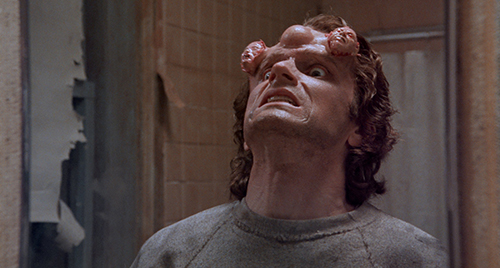

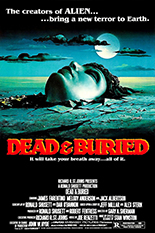
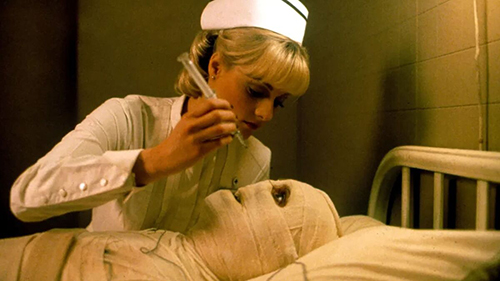

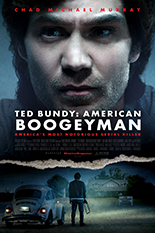 Between
Between 
 Ironically, in failing to show a shred of Ted’s supposed charisma or give him a speck of humanity, it feels icky enough to be on his side, like how a
Ironically, in failing to show a shred of Ted’s supposed charisma or give him a speck of humanity, it feels icky enough to be on his side, like how a 



